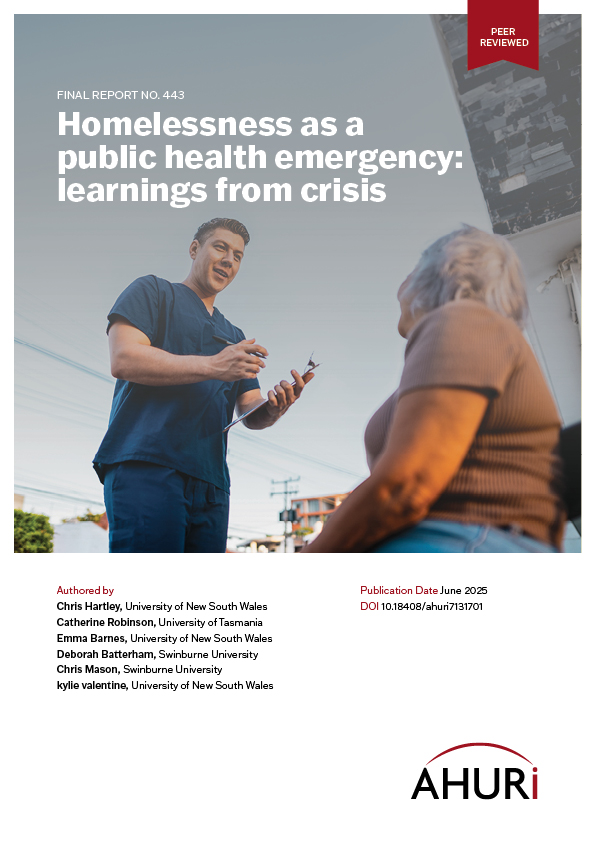
Rewriting the playbook: What happens when healthcare teams up with housing?
26 Jun 2025
Traditionally, health and homelessness sectors have run as separate entities, leading to fragmented health care and inadequate support for people experiencing homelessness. But when COVID-19 hit, Australia’s health and homelessness services broke through traditional barriers and collaborated rapidly to protect people.
New AHURI research looks at the lessons from these collaborations and identifies ways the health and homelessness sectors could continue to work together moving forward.
People experiencing homelessness have a nearly fourfold increase in the risk of dying compared with the general population and have a significantly reduced life expectancy. During COVID they were identified as being at greater risk of getting sick and a greater likelihood of experiencing a severe case.
‘The pandemic emergency created an unexpected chance to stress-test potential ways collaboration could work in delivering health outcomes’, says lead author of the research, Mr Chris Hartley from the University of New South Wales. ‘We looked at three case studies from NSW, Victoria and Tasmania and saw what worked well and what didn't work. For example, there were gaps in services for people outside of city areas and for groups other than rough sleepers.’
Targeted health responses to homelessness should continue
‘Our research found early and close collaboration between health and homelessness agencies led to more effective delivery of health services to people experiencing homelessness,’ says Mr Hartley. ‘For the future, it is essential to build on the success of targeted health initiatives that were used during COVID.’
To replicate the close collaboration between agencies seen during COVID, a number of ongoing support measures are needed, including:
- a well-resourced framework for communication, funded by government, would bring together health, housing and homelessness agencies to improve team work and information-sharing. This would help meet the ongoing health and mental health needs of homeless people, including unaccompanied homeless children
- health and homelessness agencies need to be empowered to operate beyond their usual boundaries to enable creative problem-solving and agile collaboration to continue
- people experiencing homelessness must be able to access health services (delivered by health agencies) in familiar and trusted settings
- mobile and outreach services (delivered by homeless and health services) are vital to addressing the health needs of people experiencing homelessness.
Treat homelessness as an ongoing public health emergency
‘Poor health can push people into homelessness just as being homeless can damage people’s health,’ says Mr Hartley. ‘A key lesson is that health agencies and services must take an active role in addressing homelessness as an urgent and ongoing public health crisis—not just as a social issue. This involves creating policies and practices that prioritise homelessness prevention, and ensuring vulnerable people receive support before they become homeless and need greater health interventions.’
This research was undertaken by researchers from the University of New South Wales, University of Tasmania and Swinburne University.

